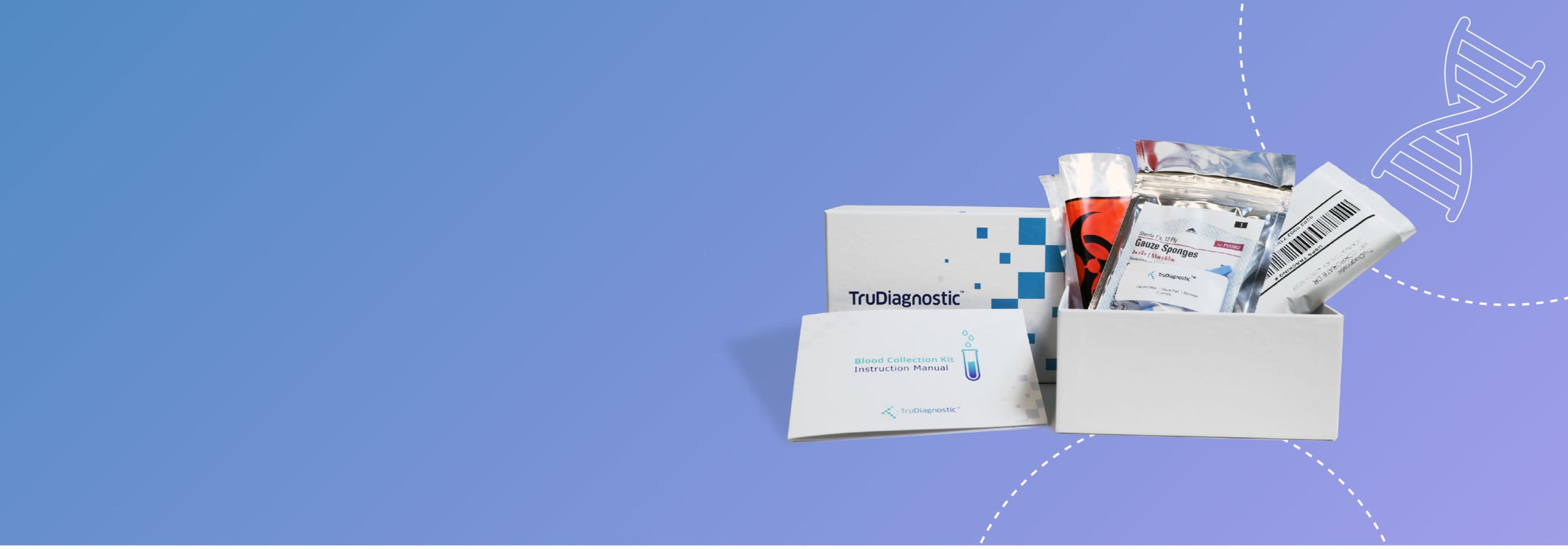A CLIA-certified lab like ours must meet certain quality standards, including qualifications for the individuals who perform the tests, and other equipment & procedure standards to ensure the accuracy and reliability of results.
Explore this in-depth look into what’s going on behind the scenes as we prepare a sample for epigenetic analysis.
FOLLOW YOUR SAMPLE THROUGH OUR LAB
De-Identification
Once we receive your sample in the mail, we give it a unique barcode, so your sample can’t be connected to personally identifiable information.
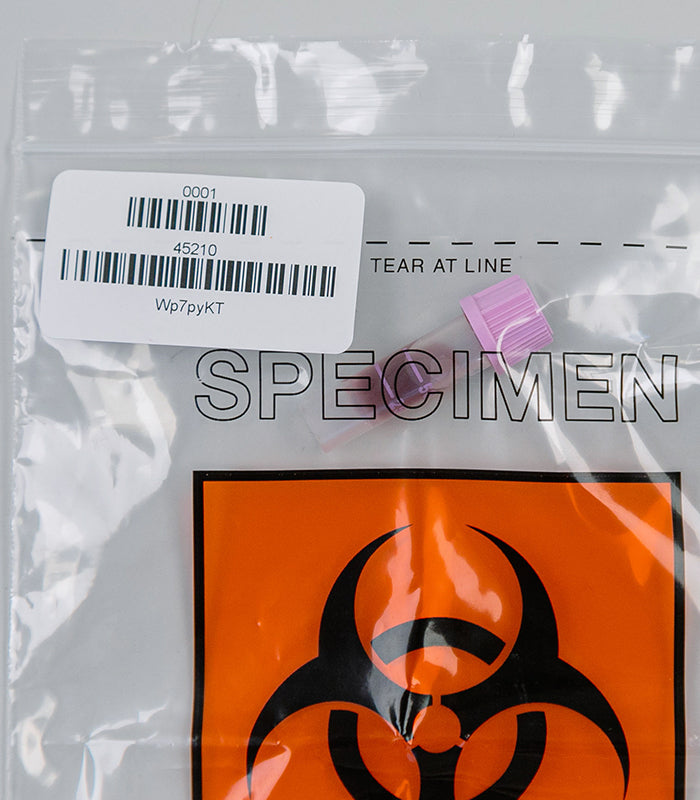
Visual Test
The first test is fast and easy – a visual test, just making sure that you gave enough blood for us to run the rest, and that it’s actually whole blood. When taking your sample, you want to collect enough that it passes that first line on the vial – but if you can easily give more, of course we’d welcome it.
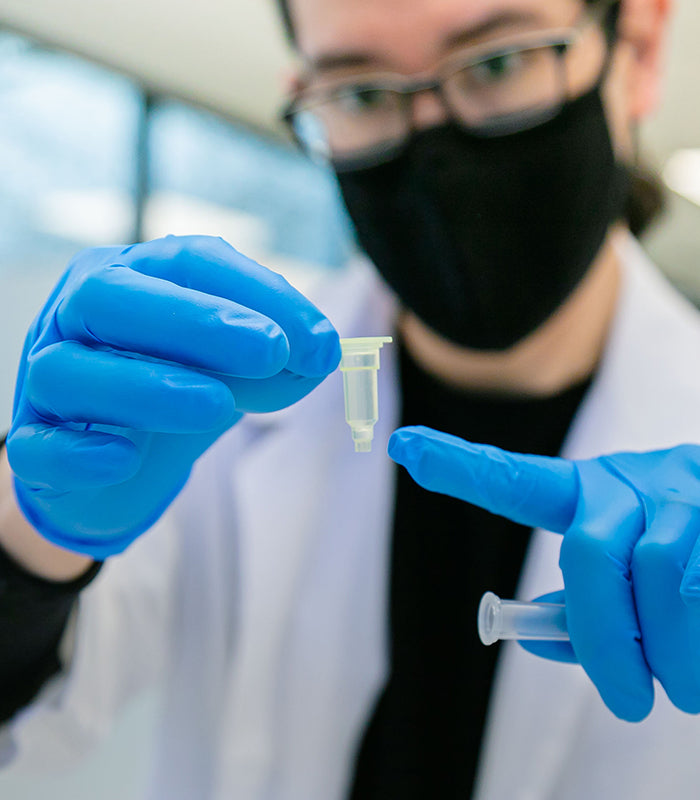
DNA Extraction
We carefully break the cells in your blood and push it through a filter that snags your DNA, leaving the other cell fragments behind.
We can then wash the DNA, and re-suspend it in a clean solution, so we only have pure DNA for the next step.
DNA Quantification
The first step of DNA Quantification is to bind the DNA to a fluorescent marker – a molecule that sticks to the DNA in predictable spots, and glows when you shine UV light on it.
We then use the Tecan Infinite M Nano, which is a piece of equipment capable of detecting and measuring light. It looks at the light that is absorbed or emitted by a sample when exposed to a specific wavelength.
The Tecan Infinite M Nano is basically a hyper-sensitive light detector that tells us exactly how much DNA is in that sample, based on how many glowing fluorescent markers were brought along for the ride.
Bisulfite Conversion
Bisulfite Conversion is the gold standard of DNA Methylation analysis. It is the same technique used by world-class researchers to develop the first Epigenetic Clocks.
This step identifies the Methylated sites on the DNA, and the non-Methylated sites. During Bisulfite Conversion, non-Methylated locations are replaced by a neutral marker, while preserving Methylated sites. This way, when we scan the DNA, we’re ONLY looking at the areas that have Methylation.
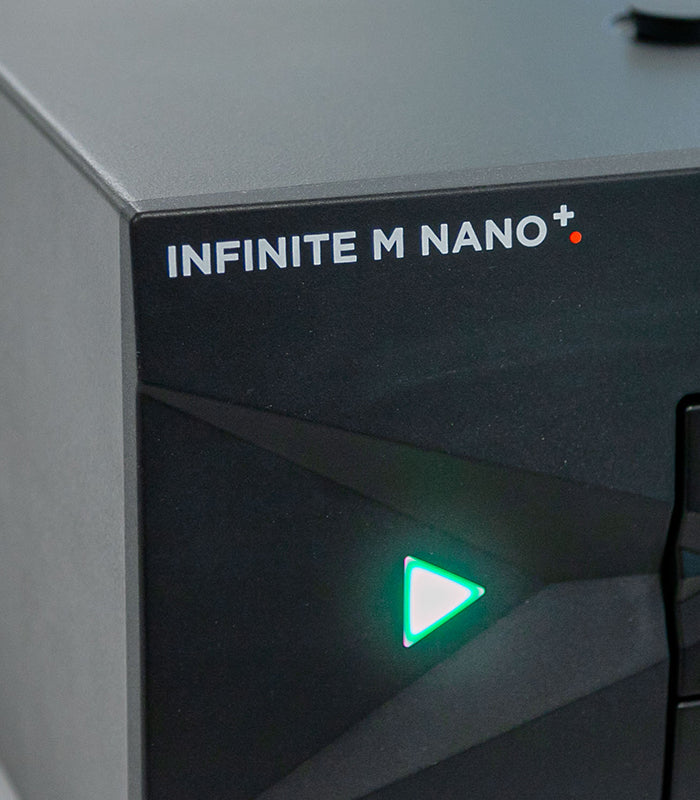
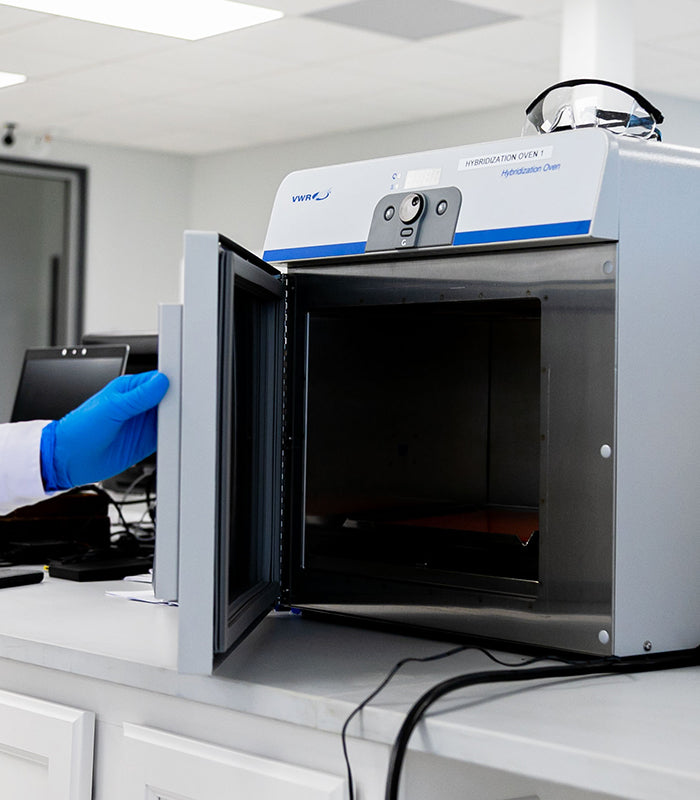
Amplification
After Bisulfite Conversion, the DNA is Amplified. This means the relevant DNA fragments are replicated, over and over again like a copier machine. This way, later tests have enough DNA to easily read and analyze the methylation on it.
Fragmentation
A solution is then added that chops the DNA into very small bits. Since the chip we use is not built to bind to long pieces of DNA, this is a necessary step.
Precipitation & Resuspension
We use isopropanol alcohol precipitation to pull the fragments out of solution, and resuspend it again in a fresh solution. Now all of our little DNA bits are ready to be hybridized.
Hybridization
Once we have our fragmented DNA, we place the samples into the wells of the Illumina Bead Chips. These bead chips have tiny silica beads with the counterpart to specific DNA fragments. When a DNA fragment from our sample finds a matching silica bead, it binds there. This is done in an environmentally controlled and sealed environment.
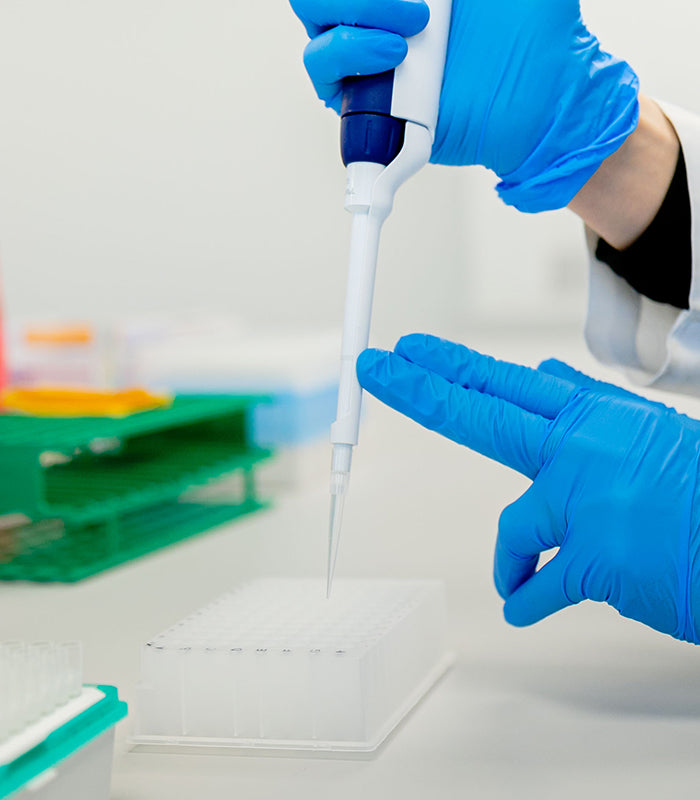
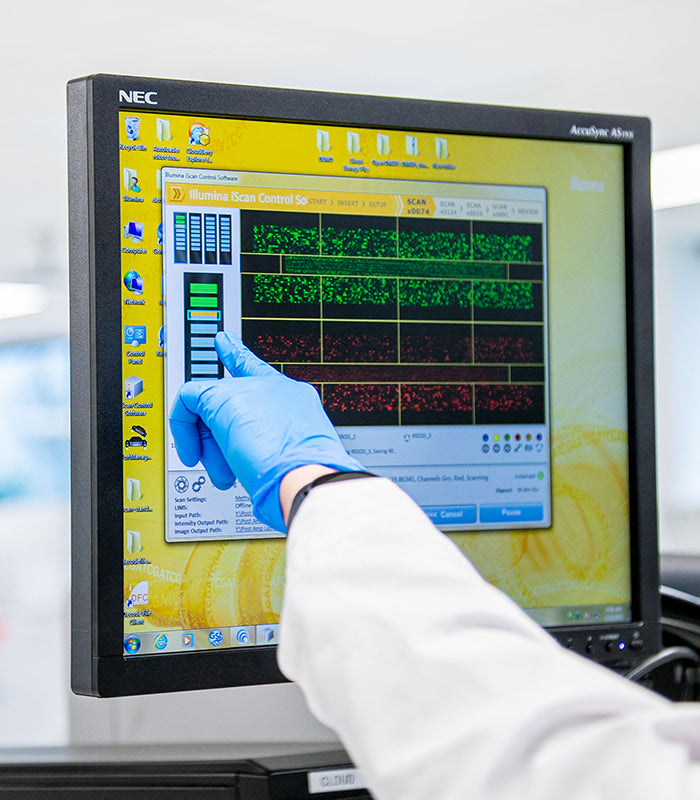
Beadchip Extension & Staining
This is the most delicate part of the process. A single nucleotide is added on the end of the DNA fragments on silica beads. Now it’s ready for staining. A tiny antibody designed to bind to the stain we use, then attaches to that single nucleotide.
We use two stains:
Red: for the AT nucleotide pair.
Green: for the GC nucleotide
These stains let us tell the difference between these
four nucleotides when scanning.
Scanning
Speaking of delicate steps – We use the IScan Illumina machine to scan the stained samples. This identifies individual points and patterns of Methylation on the DNA. We can scan over 850,000 sites.
YOUR REPORT
Analyzing with Algorithms
Once we’ve detected your Methylation, we analyze those many patterns with state-of-the-art algorithms that hone in on the Methylation sites related to Aging.
Creating Reports
Your biological age scores are generated purely by the algorithms examining your methylation. However, the questionnaire you fill out during your registration process can help narrow down some areas known to help reduce Biological Age, and identify some ways you can begin optimizing your lifestyle right away.
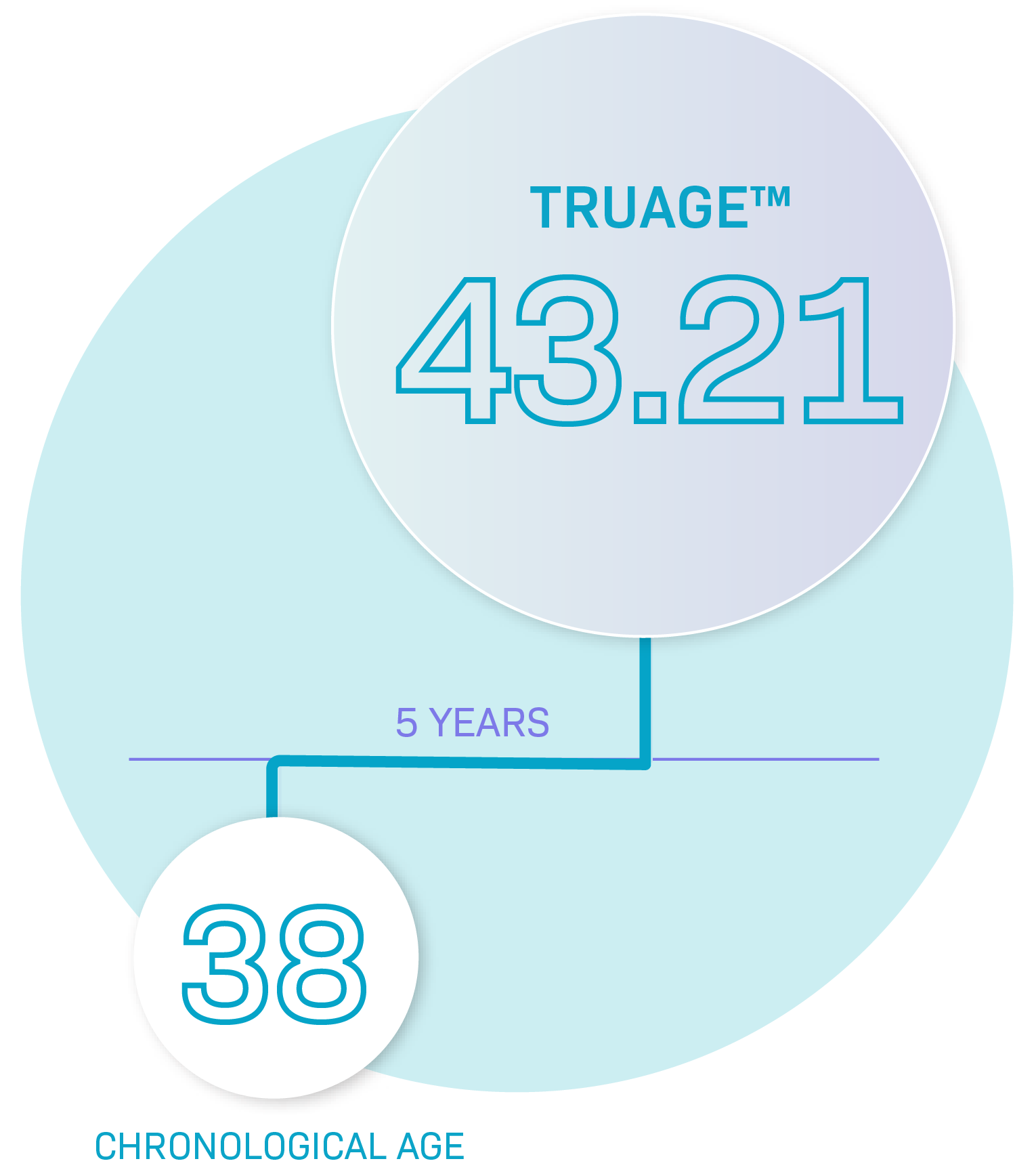
Receiving Your Report
We have a 2-3 week turnaround, from the time we received your sample in the mail to the time your report is ready. You can access your reports through our online portal, and track your progress through the portal if you test multiple times.
Your Biological Age Over Time
One-off tests give you a great look at your current condition. You can also use it to check if your lifestyle changes are having a good impact on your body’s aging.
We recommend a re-test period of 5-6 months for the average person. However, if you’re making extreme changes, you could see changes in your Methylation patterns in as few as 3-4 months
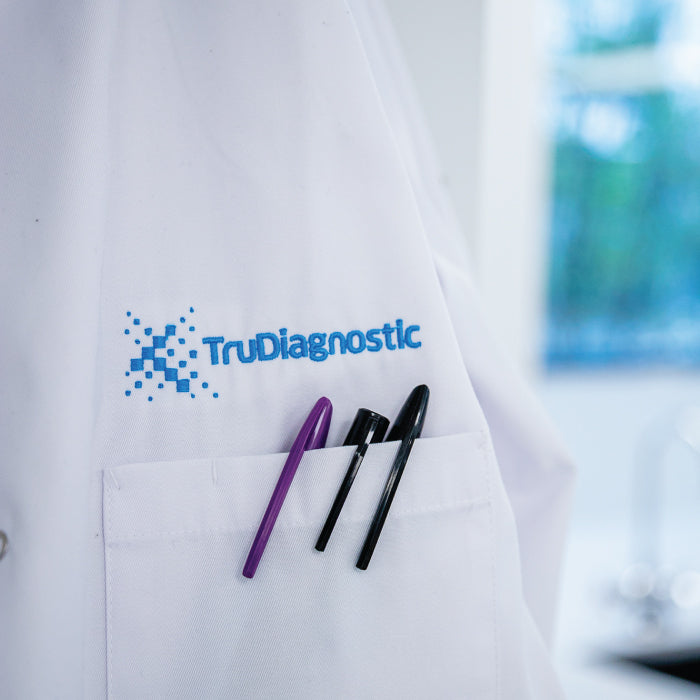
Are you a scientist interested in using our lab? Our research services:
- DNA-RNA Extractions
- Epigenomic Services
- Pyrosequencing
- Array Sequencing
- Whole Genome Bisulfite
- Acetylation (Chip-Seq)
- Genotyping
- Quantitative PCR (qPCR)
- Next Generation Sequencing
- RNA Seq
- Transcriptomic Analysis
- Bioinformatic Analysis
With our multi-omic expertise and our strict adherence to process control, we deliver the highest quality services, performed in a timely manner to generate the results you need when you need them.
*All services include complimentary consultation and experimental design.



